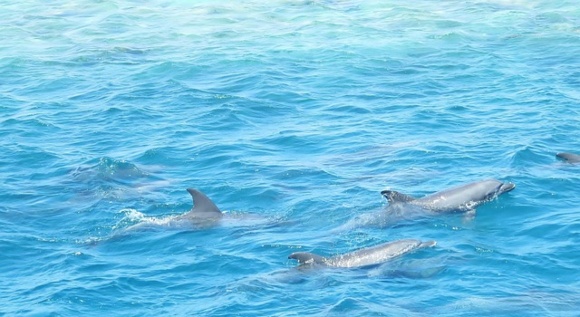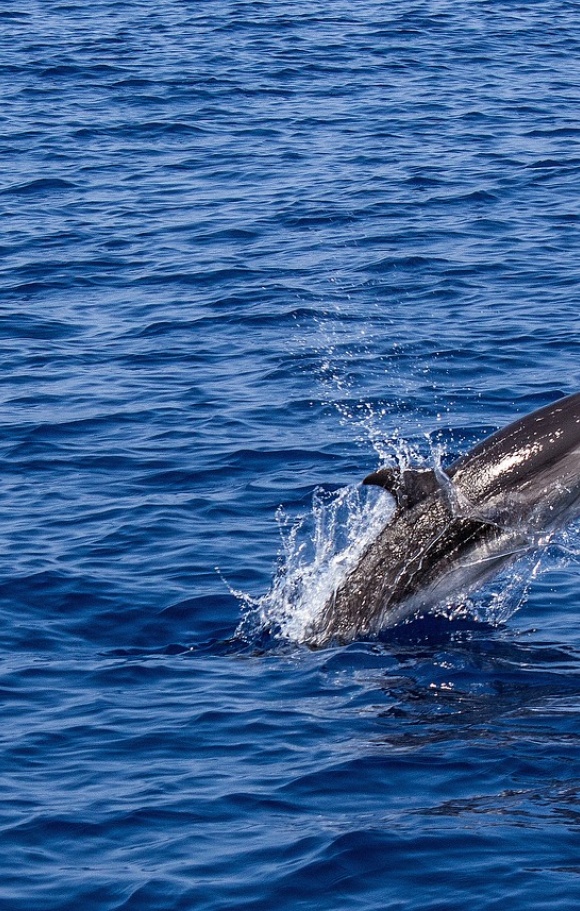
Mexico Bans Dolphin Captivity for Entertainment
Mexico has officially banned dolphin captivity for entertainment, marking a historic victory for animal welfare. This groundbreaking legislation, passed with overwhelming support in both the Senate and the Chamber of Deputies on June 26, 2025, ended the use of dolphins and other marine mammals in shows, therapy, and any commercial activity not directly related to conservation or scientific research.
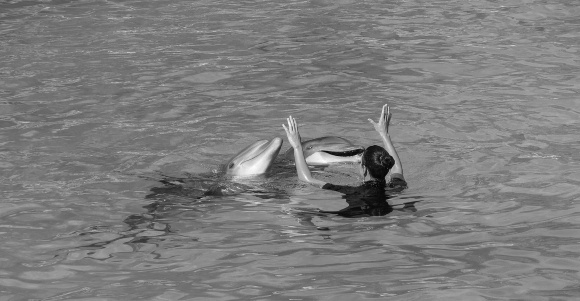
A pioneer in this movement, Sandos Hotels & Resorts was the first resort chain in Mexico to cease selling or promoting captive dolphin swims and other activities involving the mistreatment or captivity of animals, setting a powerful example for the industry long before this national ban.
What This Means for Dolphins Currently in Captivity
While the ban prohibited future captures, breeding, and commercial use, it also addressed the fate of the estimated 350 dolphins already in captivity across Mexico. The new law mandated that these dolphins must remain in captivity but under significantly improved, strict welfare standards until their natural death.
Authorities are now responsible for ensuring these animals live out their lives in conditions that genuinely meet their physical and behavioral needs. This included:
Relocation to Sea Pens or Open Systems: The law prioritized relocating dolphins from traditional concrete pools to marine pens or open systems with flowing seawater, simulating somewhat natural conditions as much as possible. This aimed to provide them with more space and a more natural environment.
Prohibition of Breeding: No more dolphins being born into servitude. The law explicitly banned the breeding of dolphins in captivity, ensuring that the current generation would be the last to endure a life of forced performance.
Strict Welfare Oversight: The government was tasked with robust monitoring of these facilities to ensure compliance with the new welfare standards. Violations could lead to significant fines and potential closure of non-compliant facilities.
Non-Commercial Use: Any existing marine mammals used for conservation purposes could not be displayed or used in any profit-generating activity. Meaning no more screaming tourists, and no more starvation to incentivize obedience.
This transition marked a critical shift from exploitation to a focus on the well-being of the animals already suffering the effects of captivity. It's a complex process, but the intent was clear: to ensure the remaining captive dolphins live out their days with as much dignity and natural stimulation as possible, a far cry from the life of forced performance they once endured.
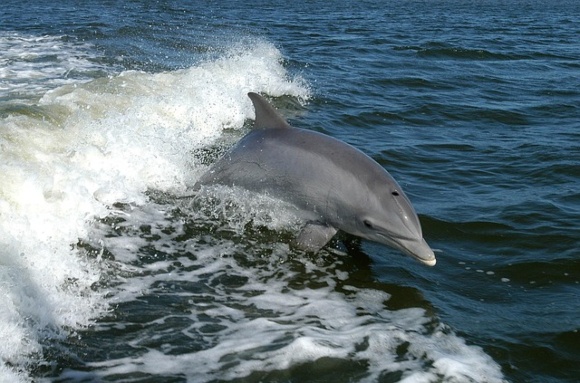
The Ugly Truth Behind Swimming with Dolphins in Captivity
For years, "swimming with dolphins" had been marketed as a magical, once-in-a-lifetime experience for tourists visiting places like Playa del Carmen, Cancun, and throughout Mexico. But beneath the surface of smiling trainers and leaping dolphins lay a dark reality. This seemingly innocent activity directly fueled an industry built on the exploitation, suffering, and slaughter of dolphins worldwide as exposed by two popular documentaries The Cove, and Black Fish
From Wild Seas to Concrete Pools: A Brutal Journey
Most people nevered wondered how these intelligent, wild creatures, accustomed to navigating vast oceans and complex social structures, ended up in small, chlorinated pools next to bustling resorts? The answer was a brutal one.
The dolphins you saw at these facilities weren't "rescued." They were captured, often violently. Imagine entire pods of dolphins—tight-knit families—being relentlessly chased, rounded up, and netted by fishermen paid to do the dirty work. Young female dolphins, often preferred for their perceived trainability, were singled out and taken. The rest of the pod, traumatized and injured from the violent capture process, often died during or shortly after the ordeal.
This wasn't about saving animals; it was about product acquisition. Shockingly, for every one dolphin successfully captured and introduced into captivity, an estimated 17 dolphins died during the brutal process. These dead or mortally injured dolphins were often simply thrown back into the ocean, washing up onshore days later. As the industry’s timeline broadened, they started breeding dolphins in captivity, and dolphin trainers would extract semen from male dolphins, and the female dolphins would be artificially inseminated. Baby dolphins bread into a life of servitude would never know the open sea, never hunt, never dive to depths of 600ms, or travel 30 miles per day like their wild counterparts, they would be condemned to a life of noise pollution, starbvation to incentize performance, and live the rest of their lives in captivity.
The Cruelty of "Training": Starvation and Submission
Once in captivity, the torment continued. These highly social and intelligent animals were forced to perform unnatural tricks – jumps, flips, and allowing tourists to ride their dorsal fins. How were they "trained" to do this? Through a cruel method of food deprivation.
Dolphins were not fed until they completed a task. While trainers might have called it "incentivization," the cold, hard truth was that these dolphins were starved into submission. This constant hunger, combined with the extreme confinement, created immense psychological and physical stress. This was the animal cruelty that visitors inadvertently funded when choosing to swim with dolphins in places like Playa del Carmen.
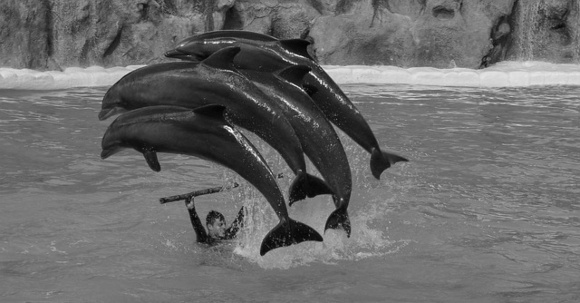
A Life of Misery: "Product Maintenance" Not "World-Class Care"
Wild dolphins are magnificent athletes, swimming over 50 miles a day, riding surf, socializing, and hunting for food in their natural ocean environment. In captivity, this vibrant life was replaced by a barren, concrete prison.
Sensory Overload: Dolphins are incredibly sensitive to sound, relying on echolocation to navigate their world. In a small pool, next to loud restaurants and tourist activities, the constant noise pollution created immense stress, often leading to stress-induced ulcers. Sound travels four times faster and further in water, amplifying the stress. "The constant hum of pool filtration systems meant that captive dolphins were never allowed to rest and were constantly disturbed. This could be described as sleep deprivation, which was used to cause high levels of stress during interrogation; basically, it’s a form of torture."
Constant Medication: To combat the ulcers caused by this unbearable stress, captive dolphins were often fed fish coated in medicine. This wasn't "world-class medical care"; it was merely "product maintenance" to keep the animals alive and performing.
Family Torn Apart & Inbreeding: Captivity tore dolphins away from their families and plunged them into a life of servitude, devoid of the natural social interactions and complex behaviors essential to their well-being. Furthermore, the industry's push for "Natural breeding"—a euphemism for aggressive artificial insemination where trainers would sexually arouse male dolphins to extract semen—led to inbreeding.
Shortened Lifespans: Despite the absence of predators and constant medication from vets, captive dolphins "died at an early age and rarely live[d] more than 20 years," while wild bottlenose dolphins could live up to 50 years.
Disease Transmission & Lack of Shade: Dolphins carry diseases transmissible to humans, and vice versa. Despite this, facilities provided "zero or inadequate shade for dolphins" from the searing Mexican sun, leading to sunburn and other skin issues. The threat of "disease transmission between dolphins and humans was completely ignored by marine mammal parks."
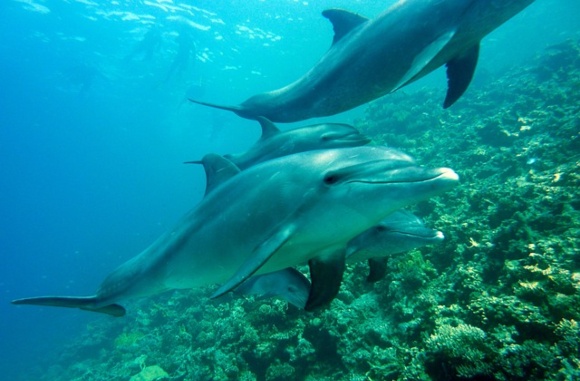
The Deception and Dangers Behind the "Smile"
The "smile" of a dolphin, a permanent physiological feature, was deceptively used to mask a reality of immense suffering. As one account noted, "Dolphins are not smiling it is merely the anatomical construction of their face. Captive dolphins have drowned themselves in the past due to depression."
Attacks on Tourists and Trainers: The notion that swimming with captive dolphins was safe was a dangerous myth. There were numerous documented instances of aggression. A dolphin named "Louise" in Cozumel violently rammed a tourist, causing "extensive bruising and immobilization." In other cases, dolphins bit children and attacked trainers. "Aggression towards humans in captivity has included broken bones, bruised and ruptured internal organs, bites and very occasionally, human mortalities." (Frohoff, 2004). Dolphins, being "pack hunters, apex predators, wolves of their domains," were not domesticated and carried immense power.
"Miseducation" Not Learning: Marine mammal parks claimed to provide educational value, but this was a blatant misrepresentation. "There is about as much educational benefit to be gained in studying dolphins in captivity as there would be studying mankind by only observing prisoners held in solitary confinement," as famously stated by Jacques Cousteau. What was taught were unnatural behaviors for entertainment.
Censorship and Lack of Transparency: When inconvenient truths surfaced, "any penetrating questions or comments of any kind that shed a negative light on dolphin captivity were deleted from their Facebook page and the commentators were blocked and/or banned." These facilities offered "zero public access to records concerning mortality of dolphins," allowing them to manipulate figures.
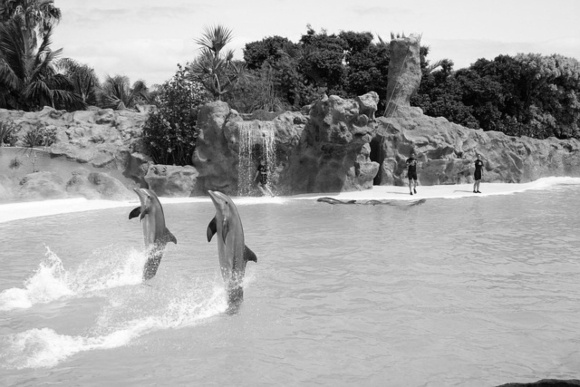
The Profit-Driven Industry: A Vicious Cycle
The captive dolphin industry was a massive, multi-million dollar business in Mexico, worth an estimated "$20,000,000 a year." The sheer volume of revenue was enough for entities, similar to big pharma in their pursuit of profit, to exploit loopholes in laws, even obtaining "scientific capture permits" that allowed dolphins to be removed from their natural environment and end up in tourist facilities.
Resorts' Complicity: Even all-inclusive resorts like Barceló, Dreams Resorts, Bahia Principe, and El CID built pools within their properties, housing dolphins in confined environments and forcing them to perform for "12 hours a day, 7 days a week." These resorts often "flat out lied to their customers" about the nature of these facilities.
Industry Certifications as a Façade: Organizations like the Alliance of Marine Mammal Parks and Aquariums (AMMPA) were criticized for certifying facilities as "safe" despite a history of incidents, including a killer whale killing three people at a SeaWorld facility, an AMMPA member. As the source noted, "AMMAP seem to have forgotten about the 3 dolphins that died within one week at Discovery Cove in July of 2009... and the two incidents of young children being bitten by frustrated dolphins, the list goes on and on."
Your Choice Mattered: Prioritize Freedom Over Fleeting Fun
The desire for a "once-in-a-lifetime" experience should never have come at the expense of another creature's freedom and well-being. By choosing to swim with captive dolphins, tourists were directly contributing to the continued exploitation and needless suffering of these magnificent animals.
While the ban is a huge step forward, it's a reminder that true appreciation for these magnificent creatures lies in protecting them in their natural habitat, not imprisoning them for fleeting entertainment. It was a vital step towards a future where the "show" is the wild ocean itself, and the dolphins are truly free.
